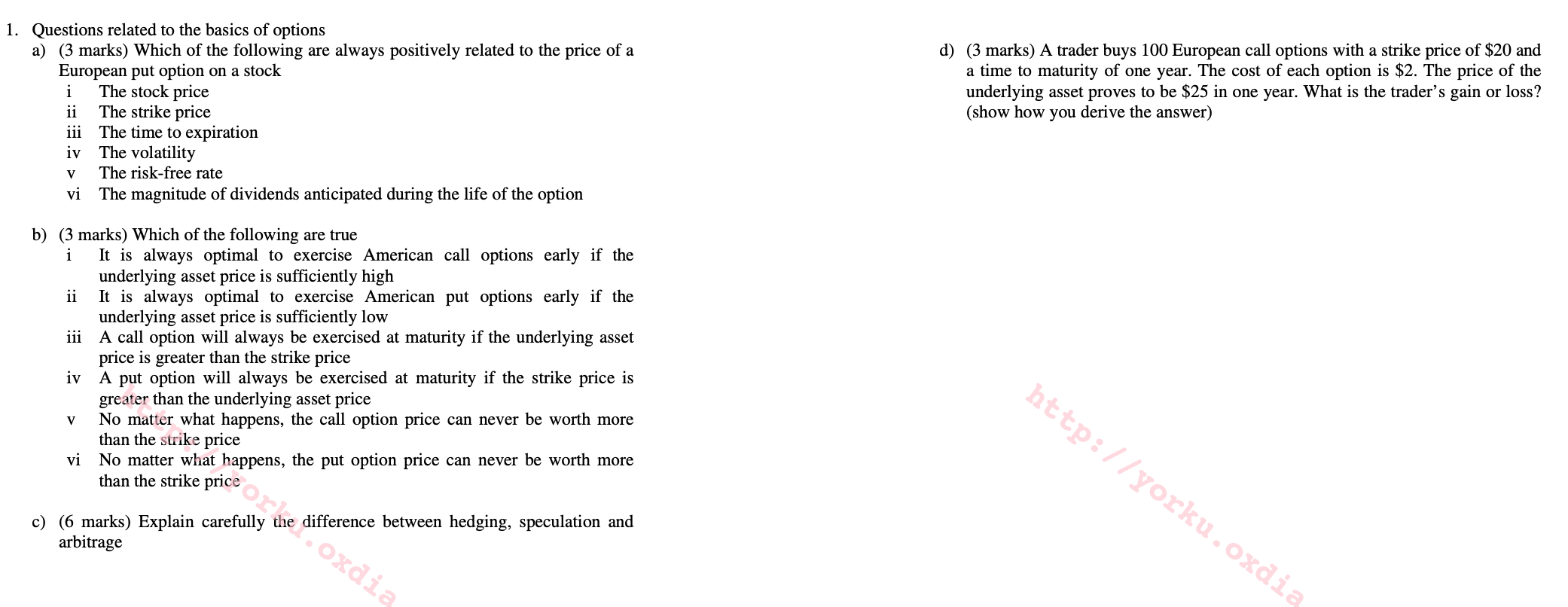
d) (3 marks) A trader buys 100 European call options with a strike price of $20 and a time to maturity of one year. The cost of each option is $2. The price of the underlying asset proves to be $25 in one year. What is the trader's gain or loss? (show how you derive the answer) 1. Questions related to the basics of options a) (3 marks) Which of the following are always positively related to the price of a European put option on a stock The stock price The strike price iii The time to expiration The volatility The risk-free rate ii iv vi The magnitude of dividends anticipated during the life of the option b) (3 marks) Which of the following are true i It is always optimal to exercise American call options early if the underlying asset price is sufficiently high It is always optimal to exercise American put options early if the underlying asset price is sufficiently low iii A call option will always be exercised at maturity if the underlying asset price is greater than the strike price iv A put option will always be exercised at maturity if the strike price is greater than the underlying asset price No matter what happens, the call option price can never be worth more than the strike price No matter what happens, the put option price can never be worth more than the strike price ii http://yorku.oxdia vi difference between hedging, speculation and di c) (6 marks) Explain carefully arbitrage d) (3 marks) A trader buys 100 European call options with a strike price of $20 and a time to maturity of one year. The cost of each option is $2. The price of the underlying asset proves to be $25 in one year. What is the trader's gain or loss? (show how you derive the answer) 1. Questions related to the basics of options a) (3 marks) Which of the following are always positively related to the price of a European put option on a stock The stock price The strike price iii The time to expiration The volatility The risk-free rate ii iv vi The magnitude of dividends anticipated during the life of the option b) (3 marks) Which of the following are true i It is always optimal to exercise American call options early if the underlying asset price is sufficiently high It is always optimal to exercise American put options early if the underlying asset price is sufficiently low iii A call option will always be exercised at maturity if the underlying asset price is greater than the strike price iv A put option will always be exercised at maturity if the strike price is greater than the underlying asset price No matter what happens, the call option price can never be worth more than the strike price No matter what happens, the put option price can never be worth more than the strike price ii http://yorku.oxdia vi difference between hedging, speculation and di c) (6 marks) Explain carefully arbitrage







